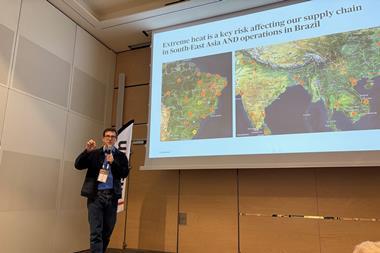Study finds that new technologies and strategies could boost pandemic vaccine supplies
If an influenza pandemic occurred this year, less than one-fifth of the approximately 13bn vaccine doses needed to fully vaccinate the global population would be available within six months in a best-case scenario, according to a study.
The new study—which calls for an increase in the supply of pandemic flu vaccines and development of a global distribution framework—was prepared by the nonprofit global health organization PATH and management consultancy Oliver Wyman, in collaboration with the World Health Organization (WHO).
Dr. Kathryn Edwards, scientific consultant to PATH and vice-chair for Pediatric Research at Vanderbilt University, explained: ‘Preventive measures for influenza are a global priority, given both the current disease burden associated with seasonal strains as well as the potential for significant mortality and morbidity due to an emergent pandemic strain.’
The authors have developed a set of recommendations on how best to provide global access to pandemic vaccines.
“The potential of newer technologies to provide global access is very encouraging.
Dr. John Boslego, director of the Vaccine Development Global Program at PATH
Andrew Pasternak, a director at Oliver Wyman, commented: ‘While the situation at first glance looks extremely challenging, there are real solutions that can be pursued to close the gap. Successfully realizing these solutions, however, will require both global commitment and careful coordination among key stakeholders, with WHO playing a central role.’
Oliver Wyman and PATH calculated that, of the approximately 13bn doses needed in case of an outbreak, only 2.4bn doses could be generated within a six-month time frame under a best-case scenario.
According to the study, ‘real-time’ access, in which vaccine production is begun at the time of the outbreak, is not a viable approach.
The authors argue that without a targeted strategy to stimulate the evolution of industry capacity, it is unlikely that the goal of meeting the needs of both industrialized and developing countries by 2012 will be achieved.
“Preventive measures for influenza are a global priority, given both the current disease burden associated with seasonal strains as well as the potential for significant mortality and morbidity due to an emergent pandemic strain.
Dr. Kathryn Edwards, scientific consultant to PATH and vice-chair for Pediatric Research at Vanderbilt University
In contrast to waiting for a pandemic to start before initiating vaccine production, if prepandemic measures, in which production of vaccines based on currently circulating H5N1 strains for stockpiling or prepandemic immunization, began today, global demand could be covered by 2011 in a best-case scenario, said the report.
In the longer term, newer technologies, have the potential to meet the need for affordable influenza vaccines. Critically, they could offer the advantage of ensuring that vaccine strains are well matched to the circulating influenza strains.
Dr. John Boslego, director of the Vaccine Development Global Program at PATH, commented: ‘The potential of newer technologies to provide global access is very encouraging. Accelerating further development of live, attenuated and recombinant technologies should be a global priority.’
The study estimates that an investment of $2bn to $10bn is required to implement both near-term and longer-term strategies for vaccine access.



















No comments yet